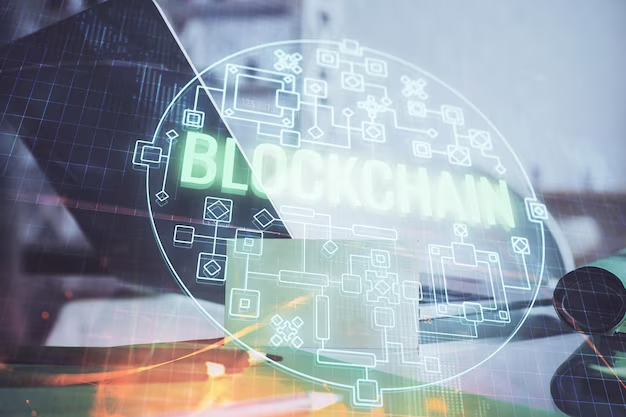Understanding Blockchain in Cryptocurrency: A Comprehensive Guide
Imagine a digital universe where transactions are secure, transparent, and nearly impossible to manipulate. Welcome to the world of blockchain, the foundational technology behind cryptocurrencies like Bitcoin and Ethereum. But what exactly is a blockchain, and why is it so crucial to the world of crypto? In this guide, we'll explore this revolutionary concept and its significant role in reshaping financial systems.
🚀 What is Blockchain? An Overview
At its core, a blockchain is a distributed ledger technology. Simply put, it’s a chain of data blocks that are securely linked together using cryptographic methods. This chain is decentralized, meaning it isn't stored in a single location or managed by a single entity. Instead, it’s replicated across a network of computers, which makes it incredibly secure and resistant to tampering.
How Blockchain Works
Here’s a step-by-step breakdown of how blockchain operates:
- Transaction Initiation: A transaction is requested, for instance, sending Bitcoin from one person to another.
- Transaction Verification: Nodes within the network validate the transaction using a consensus mechanism.
- Block Creation: Once verified, the transaction is bundled with others into a new block.
- Block Addition to the Chain: The block is added to the existing chain of blocks, creating a permanent and unalterable record.
- Completion: The transaction is complete, and the blockchain network provides an updated record for all participants.
🔎 Key Features of Blockchain Technology
Blockchain technology is transforming multiple sectors. Here are some core characteristics that make it unique:
- Decentralization: No single point of control enhances security and reduces the risk of mass fraud.
- Immutability: Once recorded, the data in any block cannot be altered without altering subsequent blocks, which requires network consensus.
- Transparency: Transactions are visible to participants, making the process clear and accountable.
- Security: Cryptographic techniques ensure data integrity and the authenticity of transactions.
- Efficiency: Automates verification and reduces the need for intermediaries, potentially lowering transaction times and costs.
📊 Types of Blockchains
There are distinct types of blockchains, each serving different purposes in various environments:
Public Blockchains
These are open to anyone in the world. Cryptocurrencies like Bitcoin and Ethereum operate on public blockchains, allowing broad participation and transparency but requiring significant computational power to maintain.
Private Blockchains
These are restricted to specific participants, often used by companies for internal processes. They offer more control and faster transactions but lack the decentralized nature of public blockchains.
Consortium Blockchains
A hybrid model managed by a group of organizations, offering the benefits of both private and public blockchains. They provide controlled access but with sufficient decentralization for transparency.
Hybrid Blockchains
These blockchains utilize characteristics from both public and private models, allowing organizations to choose which data to be kept public and which to remain private.
🖥️ Blockchain in the World of Cryptocurrency
Cryptocurrencies use blockchain to store transactional data in a secure and decentralized manner. They allow peer-to-peer exchange of digital assets without the need for intermediaries, such as banks or payment processors.
The Role of Blockchain in Bitcoin
Bitcoin was the first practical application of blockchain technology. It paved the way for digital currencies by providing a new method to guarantee transactions' authenticity while maintaining user anonymity. Blockchain allows Bitcoin to solve the double-spending problem, ensuring that coins are not duplicated or falsified.
Beyond Bitcoin: Ethereum and Smart Contracts
Ethereum, another notable cryptocurrency, extends blockchain's functions with the introduction of smart contracts. These are programs stored on the blockchain that automatically execute when predefined conditions are met, reducing the need for third-party enforcement.
🔐 Security and Challenges of Blockchain
Blockchain security relies on its decentralized structure and encrypted blocks. However, it is not without challenges:
- Scalability: As more transactions are added, network congestion can hamper speed.
- Energy Consumption: Particularly in proof-of-work systems, the computational power required is substantial, raising environmental concerns.
- Regulatory Issues: As blockchain disrupts traditional systems, regulatory frameworks struggle to keep pace.
📈 Applications Beyond Cryptocurrency
Blockchain’s potential extends beyond cryptocurrencies, impacting various fields:
- Supply Chain Management: Improves transparency and traceability of goods from origin to market.
- Healthcare: Secure, easily accessible storage of patient records.
- Finance: Reduces processing times and errors in financial transactions.
- Voting: Potential to enhance electoral integrity through tamper-proof voting systems.
🔄 Blockchain and the Future
As blockchain technology evolves, its transformative impact is undeniable. In the future, we might see:
- More efficient consensus mechanisms reducing energy usage.
- Expansion into more industries, streamlining operations and reducing costs.
- Regulatory advancements that reconcile blockchain’s decentralization with governance needs.
🔍 Key Takeaways on Blockchain in Crypto
Here's a summary of the most vital points we covered:
- Decentralization: Essential for security and transparency.
- Immutable Records: Once data is in the chain, it's permanent.
- Public vs. Private: Understand the distinctions for tailored applications.
- Smart Contracts: Automate and enforce agreements without intermediaries.
- Beyond Money: Blockchain’s potential in supply chains, healthcare, finance, and more.
🚀 Looking Forward
Blockchain is more than a buzzword; it's a profound shift in how we handle information and transactions. As you continue exploring this dynamic field, remember that the landscape is rapidly evolving. Keeping abreast of technological advances and regulatory changes will be crucial to navigating the blockchain future.
Whether you're a crypto enthusiast or exploring blockchain's potential in another industry, understanding its fundamental principles is an empowering first step toward harnessing this powerful technology. 🌐

Related Topics
- Can a Masters Student On F1 Student Invest In Crypto
- Can I Buy Crypto On Fidelity
- Can I Buy Crypto With a Credit Card
- Can You Buy Crypto With a Credit Card
- Can You Day Trade Crypto
- Can You Short Crypto
- Do You Have To Pay Taxes On Crypto
- Does Crypto Arbitrage Work Reddit
- How Can I Buy Crypto
- How Do I Buy Crypto